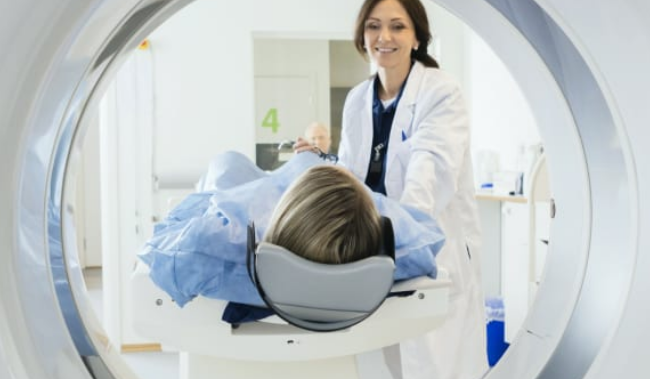Radiologists often work behind the scenes, yet they play a pivotal role in the fight against cancer. Their expertise in interpreting Magnetic Resonance Imaging (MRI) scans can mean the difference between early detection and a delayed diagnosis. Understanding what goes on in the daily life of a radiologist offers insight into the critical role these specialists play in cancer care.
This article takes you through a typical day in the life of a radiologist, highlighting the challenges, responsibilities, and impact of reading cancer MRIs.
Morning: Reviewing Overnight Scans
A radiologist’s day often begins early, reviewing images from overnight MRI scans. Hospitals and imaging centers operate around the clock, and urgent cases—such as suspected brain tumors, stroke, or abdominal masses—need immediate attention.
When reviewing cancer MRIs, radiologists look for:
- Abnormal lesions or masses – Size, shape, and location.
- Contrast enhancement patterns – Some tumors absorb contrast differently than normal tissue.
- Tissue characteristics – Diffusion, density, and signal intensity can indicate malignancy.
- Changes from prior scans – Comparing current images to previous MRIs can reveal tumor growth or regression.
This phase requires meticulous attention to detail. A missed subtle lesion could delay diagnosis, while a false positive could lead to unnecessary procedures.
Mid-Morning: Multidisciplinary Case Reviews
After reviewing scans, radiologists often participate in tumor boards or multidisciplinary meetings. These sessions bring together oncologists, surgeons, pathologists, and radiologists to discuss complex cases.
During these meetings, the radiologist:
- Explains findings from MRI scans.
- Highlights potential areas of concern that may need biopsy.
- Offers insights on tumor size, location, and involvement with surrounding tissues.
- Advises on treatment planning based on imaging results.
This collaboration ensures that patients receive personalized care, with imaging findings integrated into clinical decision-making.
Afternoon: Detailed Image Analysis and Reporting
In the afternoon, the radiologist often focuses on writing detailed reports. For cancer MRIs, reports must be:
- Accurate: Clearly describing lesions, their characteristics, and possible implications.
- Comprehensive: Including comparisons to previous scans and noting any subtle changes.
- Actionable: Providing recommendations for further imaging, biopsy, or follow-up.
Many radiologists use advanced software tools to aid in measurements, 3D reconstructions, and functional imaging analysis, such as diffusion-weighted imaging (DWI) or perfusion MRI. These tools improve diagnostic accuracy and help clinicians plan precise treatments.
Challenges in Reading Cancer MRIs
Reading cancer MRIs is not without challenges:
- Subtle Findings: Small tumors can be difficult to distinguish from benign tissue.
- Variability in Imaging: Differences in MRI protocols, patient movement, or prior surgeries can complicate interpretation.
- Time Pressure: Radiologists must balance speed with accuracy, especially in urgent or high-volume settings.
- Communication: Explaining complex findings to clinicians and ensuring proper follow-up requires clarity and precision.
Despite these challenges, radiologists play a crucial role in early detection, treatment planning, and ongoing cancer care.
Evening: Follow-Ups and Research
Radiologists often end the day reviewing follow-up scans or conducting research. Staying current with new imaging techniques, AI-assisted diagnostics, and advanced MRI protocols is essential for improving patient outcomes.
Many radiologists are involved in:
- Clinical research: Studying imaging patterns to improve early cancer detection.
- AI integration: Using machine learning to identify subtle lesions that may be missed by the human eye.
- Protocol development: Optimizing MRI sequences for specific cancer types.
These efforts contribute not only to individual patient care but also to advancements in the field of oncology imaging.
The Impact of Radiologists on Patient Lives
Though patients may rarely meet their radiologists, these specialists have a direct impact on treatment decisions. An accurate MRI reading can:
- Detect cancer early when it is most treatable.
- Guide surgeons and oncologists in planning precise interventions.
- Monitor response to therapy, helping adjust treatment as needed.
- Reduce unnecessary procedures by clarifying suspicious findings.
Radiologists are the unseen detectives in cancer care, translating complex images into actionable insights that save lives.
Conclusion: Behind Every MRI Is a Skilled Eye
A day in the life of a radiologist revolves around careful analysis, collaboration, and decision-making. Reading cancer MRIs requires not only technical expertise but also critical thinking, communication, and dedication.
For patients, the work of radiologists may be invisible, but it is essential for accurate diagnosis, effective treatment, and ultimately, survival. From early detection to monitoring treatment response, radiologists transform MRI images into life-saving knowledge.
Also Read :
